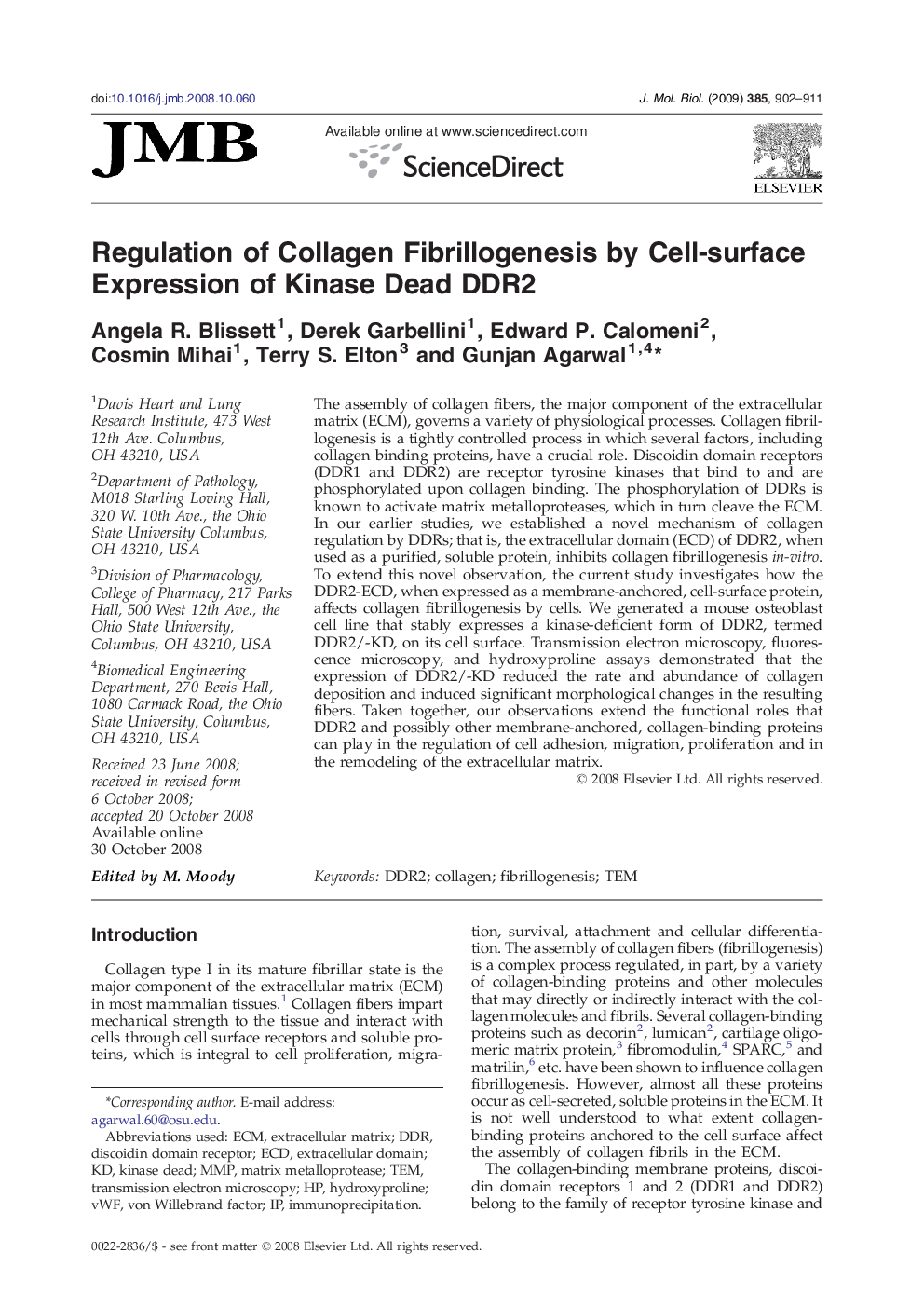| Article ID | Journal | Published Year | Pages | File Type |
|---|---|---|---|---|
| 2186806 | Journal of Molecular Biology | 2009 | 10 Pages |
The assembly of collagen fibers, the major component of the extracellular matrix (ECM), governs a variety of physiological processes. Collagen fibrillogenesis is a tightly controlled process in which several factors, including collagen binding proteins, have a crucial role. Discoidin domain receptors (DDR1 and DDR2) are receptor tyrosine kinases that bind to and are phosphorylated upon collagen binding. The phosphorylation of DDRs is known to activate matrix metalloproteases, which in turn cleave the ECM. In our earlier studies, we established a novel mechanism of collagen regulation by DDRs; that is, the extracellular domain (ECD) of DDR2, when used as a purified, soluble protein, inhibits collagen fibrillogenesis in-vitro. To extend this novel observation, the current study investigates how the DDR2-ECD, when expressed as a membrane-anchored, cell-surface protein, affects collagen fibrillogenesis by cells. We generated a mouse osteoblast cell line that stably expresses a kinase-deficient form of DDR2, termed DDR2/-KD, on its cell surface. Transmission electron microscopy, fluorescence microscopy, and hydroxyproline assays demonstrated that the expression of DDR2/-KD reduced the rate and abundance of collagen deposition and induced significant morphological changes in the resulting fibers. Taken together, our observations extend the functional roles that DDR2 and possibly other membrane-anchored, collagen-binding proteins can play in the regulation of cell adhesion, migration, proliferation and in the remodeling of the extracellular matrix.
